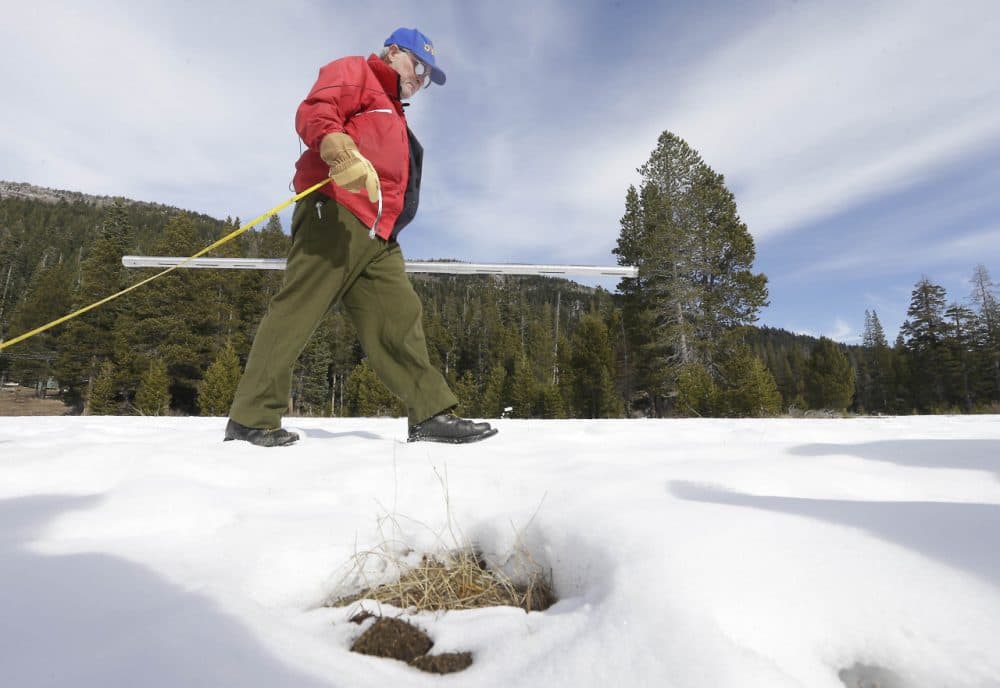Advertisement
From Bad To Worse: California's Snowpack Drops To Historic Low
Resume
Today, scientists in California will take readings of one of the most important indicators of the drought situation. The news is not good. Preliminary readings show the snowpack levels at less than 10 percent of their historic average.
The snowpack is often called California's "frozen reservoir," and it supplies as much as one-third of the state's drinking water. What will it mean for the parched state to have so little snow melt this year?
Craig Miller, science editor for KQED in San Francisco, joins Here & Now's Jeremy Hobson with details.
Guest
- Craig Miller, science editor for KQED in San Francisco. He tweets @voxterra.
This segment aired on April 1, 2015.